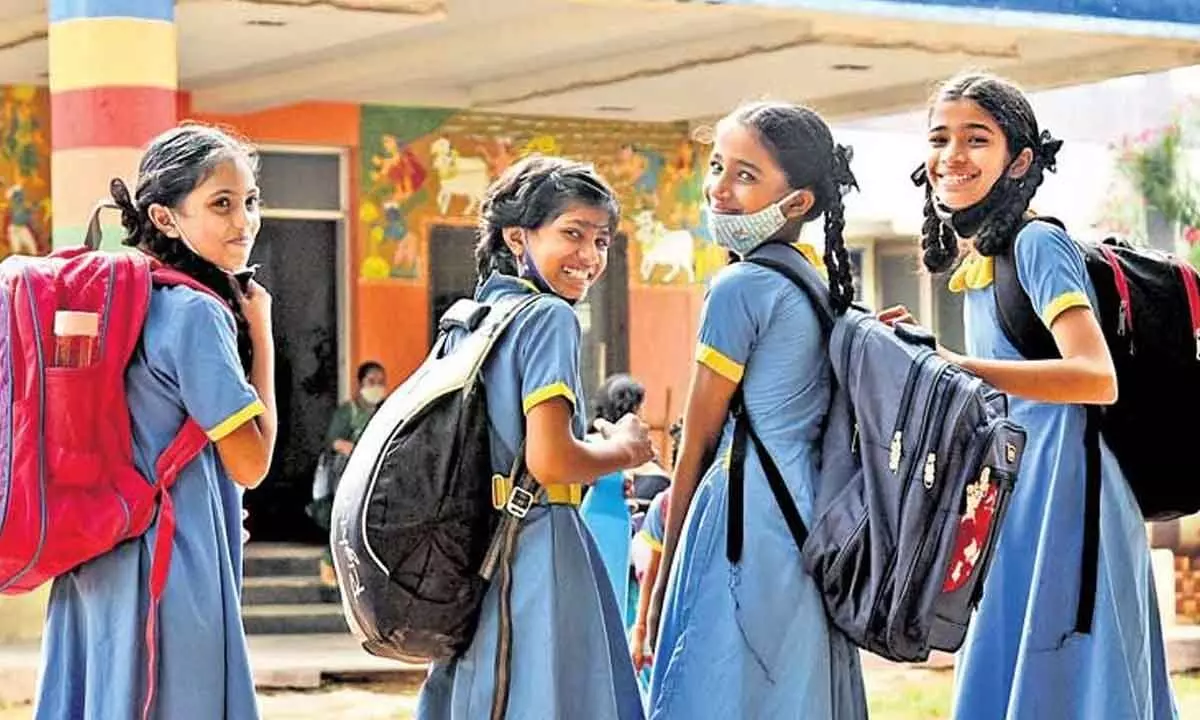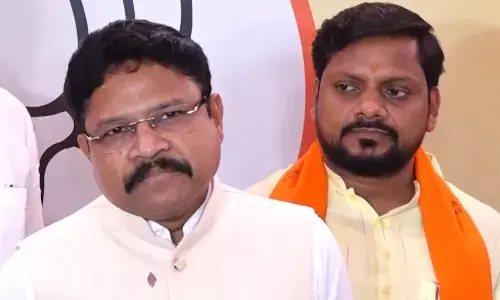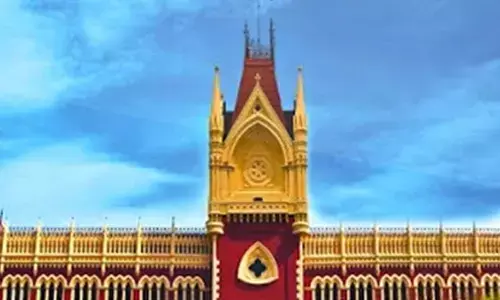Are govt schools hit by reverse migration?

The State govt’s teacher recruitment raises hopes, with enrollments likely to go up in the next two academic years
Hyderabad: Are government schools hit by reverse migration?
About three lakh students have reportedly left the government schools run under different managements during the academic year 2023-24.
According to sources, there are two primary reasons for the fall in enrollments at the entry level of school education in the State. The falling birth rates impact the overall footfalls into the primary-level schooling system. Secondly, the lack of teachers and mushrooming of the new schools impact the enrollments at the primary level in the government schooling system.
The schooling ecosystem in 2014 in the united Andhra Pradesh comprises three kinds.
Firstly, the Telangana region had more number of government schools, a system inherited from the Nizam time, and the Andhra region had more number of municipal schools. Besides, the aided schools run in both regions.
However, it was under the then Congress government which had allocated huge parcels of lands to kickstart the mandal level schools to take care of primary education and Zilla Parishad Schools to take care of the High Schools. The two came into existence after the Panchayat Raj Act in 1956. Thus, both primary and high school education are being managed by the local bodies. The grants for these schools used to come from the local bodies. However, the services of the teachers were handed over to the education department in 1998. Currently, the names of Mandal Praja Parishad and Zilla Parishad Schools remain but their management falls under the state school education department. This is because education is one of the subjects kept under the local bodies under the 73rd Constitutional Amendment relating to the local bodies.
Speaking to The Hans India, United Teachers Federation-Telangana (UTF-T) said, before the state formation there were 280 residential schools in Telangana and 750 new residential schools have been started after the formation of Telangana from 2016, taking the total number of residential schools in the state to 1,022.
The new schools were started under five managements for SC, ST, BC and Minorities. Mostly, students from the economically backward sections were mainly coming to the government schools in the villages and mandals. However, with the start of the residential schools cream of the students from the SC, ST, BC and Minority sections are going to the residential schools as they provide free boarding as well and the number of teachers taking care of the classes is far better than the MPP and ZP Schools.
Also, the MPP and ZP Schools do not have pre-primary sections like Nursery, LKG and UKG sections. This is forcing parents even from the economically backward and downtrodden to send their children to private schools. Once in the private school system, they wanted to continue their wards. The reason is that private schools irrespective of whether they have qualified teachers or not ensure every subject class is taken by a different teacher. The state government did start the English medium in line with the reported aspirations of the parents to send their children to English medium schooling. However, the same teacher had to handle both the Telugu and English media classes due to the lack of a sufficient number of teachers in the MPP and ZPP schools.
The trend of sending to private schools showed a reverse migration immediately after Covid, and about 2 lakh students from the private schools had joined the government schools. However, it showed a reverse trend, in that along with the 2 lakh students joining the government schools one more lakh students have left the government schools during the academic years 2022-24. Bringing the overall enrollment footfalls to the government schools hovering around the pre-Covid period. "During the current academic year, it showing some stabilising trend. But, this will continue only if the schools in the MPP and ZPPs have teachers. Hopes are high with the State government with the ongoing teacher recruitments and the footfall in the government schools are expected to increase in the next two academic years," says Ravi.













